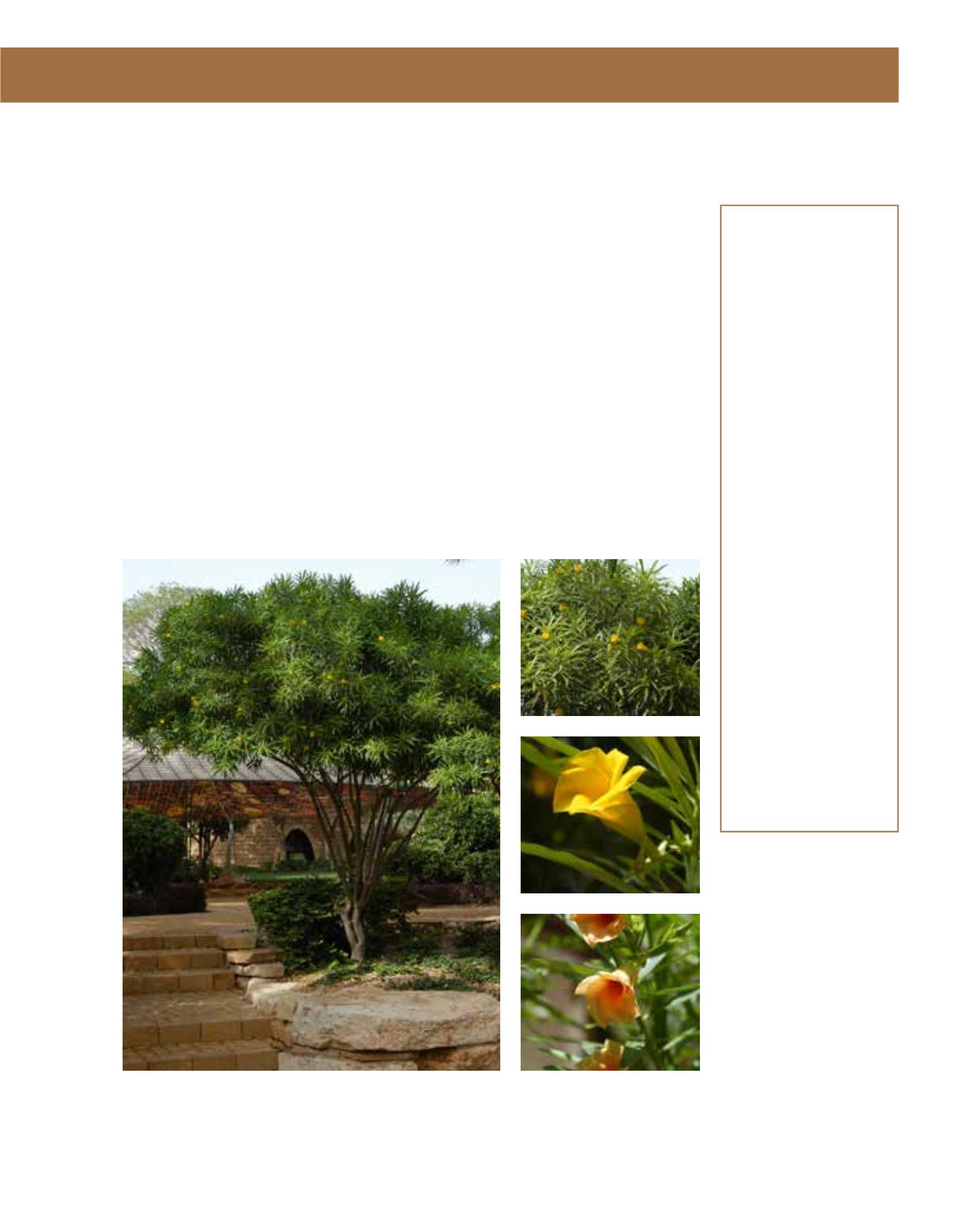

GENERAL
Origin
:
sub-tropical,
tropical
Vigour
:
fairly fast
growing
Humidity
:
semi-humid, very
humid, extremely
humid
Propagation :
sowing and
pricking out,
cuttings
Maintenance :
moderate
CONDITIONS
Urban climate :
resistant
Dessication :
vulnerable
Stagnant water :
vulnerable
Irrigation
:
medium
Salinity/ppm :
very high (7000
ppm)
Hardiness
:
-3°C
SHAPE
Type
:
shrub, tree
Height
:
2 m-6 m
Spread
:
2 m-6 m
Foliage
:
evergreen
FLOWER
Colour
:
yellow, orange,
pink
Size
:
5 cm - 8 cm
Period
:
June - November
Smell
:
scented, strong,
pleasantly
scented, flower,
sweet
FRUIT
Type of fruit :
drupe
Fruit size
:
3.5 cm
Toxicity
:
highly poisonous
At first sight, this shrub is often mistaken for an oleander, which is its most popular relative.
Indigenous to tropical America, this plant became known as Yellow Oleander to all frost-free
regions worldwide. In late spring until autumn, it grows funnel-shaped, fragrant flowers in yellow,
salmon or orange about 5 to 8 cm in size. Inflorescences attract butterflies and scattered flowering
occurs the rest of the year. A variety called ‘Alba’ features white flowers that contrast well with the
lush green foliage. The leaves are lanceolate and often pendulous, with a glossy surface measuring
about 15 cm in length. Odd-shaped, bulky pods are green at first, turning red and black when
ripe. They grow two nut-like seeds which readily germinate. The other method of propagation is
semi-mature cuttings planted in late summer. For the best appearance, the soil should be well-
drained and fertile with frequent irrigation. Nevertheless, Yellow Oleanders take full sun, heat,
salinity and even drought. In cultivation, they remain shrubs some 3 metres high, while they may
grow as small trees to 6 metres in their homeland or under ideal conditions. In some regions,
they are considered invasive. Very common and useful shrubs in Arriyadh, they are easy to grow
and always have a lush appearance. They can be planted in containers, used as flowering hedges
or trained as a specimen tree. Heavy pruning is tolerated and results in rejuvenated, lush growth.
Wounds exude a milky latex that irritates the skin.
302
Thevetia peruviana,
Apocynaceae
Be-Still Tree,
Yellow Oleander
















